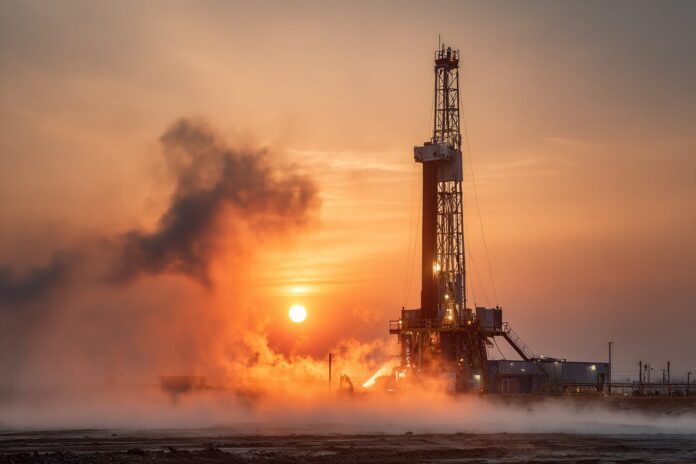Revolutionizing Geothermal Energy with Energy Beams
Imagine harnessing the Earth’s heat at nearly any location worldwide. Thanks to visionary startups like Quaise Energy, this idea is transitioning from concept to reality. Most importantly, the technology utilizes beams of energy to directly melt rock, rather than relying on conventional mechanical drills. This breakthrough offers a new approach to accessing deep geothermal energy sources that have long remained untapped.
Because traditional geothermal systems are limited to areas with near-surface heat, innovative energy beam drilling may redefine what is possible. By eliminating direct contact with rock, the wear-and-tear on machinery is mitigated, paving the way for super-deep drilling. Besides that, these advantages position the technology as a promising candidate not only for remote areas but also for regions previously considered unfeasible for geothermal extraction.
Overcoming the Challenges of Conventional Drilling
Historically, geothermal energy production has been confined to regions where geothermal gradients are favorable, such as in Iceland or parts of California. However, getting to profound depths often results in severe limitations because conventional drills degrade in ultra-high temperatures and extreme pressures. Most importantly, this technological barrier has stifled the global exploitation of geothermal energy.
Therefore, tapping into geothermal sources beyond current limits requires a radical shift in how we approach drilling. Engineers and scientists are now exploring alternatives like electromagnetic energy beams. As discussed in resources such as Kaufman Substack and MIT News, the goal is to bypass the mechanical limitations and access energy reservoirs that lie deep below the surface, thereby unlocking a nearly inexhaustible clean energy source.
Meet Quaise Energy: Pioneering Rock-Melting Drilling
Enter Quaise Energy, a startup with roots in MIT research, that is carving out a niche in the renewable energy landscape. Utilizing millimeter-wave electromagnetic beams—akin to X-rays in their ability to transfer energy—the company’s approach melts and vaporizes rock to create a tunnel. Most importantly, this method circumvents the challenges posed by direct mechanical contact with involved materials.
Because the energy is transferred in a contactless manner, the drilling process permits access to depths up to 20 kilometers. In addition, the rapid heating and vaporization of rock accelerate the drilling in a controlled manner. Resources like Ground News offer further insights into how such strategies can open up even geologically challenging sites for deep energy extraction.
How Energy Beam Drilling Works
Unlike traditional drilling techniques that grind through rock, Quaise’s innovative system uses high-powered electromagnetic waves generated by specialized gyrotrons. The beam rapidly heats the rock, leading to its vaporization and carving out a tunnel in the subsurface structure. Most importantly, this method is not restricted by the mechanical durability of drill bits, enabling access to geological layers previously deemed unreachable.
Because of this procedure, the drilling process is efficient and less prone to mechanical failures. In addition, the technique reduces downtime caused by wear-and-tear. As explained in Canary Media, this technology could transform how deep geothermal wells are established, ensuring a more reliable and sustainable method of energy extraction.
Repurposing Fossil Fuel Plants for Clean Energy
Because transforming existing fossil fuel infrastructures is pivotal in today’s energy transition, Quaise Energy’s vision includes repurposing legacy power plants. Existing coal and gas facilities, instead of being scrapped, can be retrofitted with geothermal wells, thereby providing high-temperature steam to operate current turbines. Most importantly, this integration means that power plants may achieve near-zero emissions with minimal structural changes.
In addition, repurposing these plants accelerates the deployment of clean energy. According to MIT News, this strategy paves the way for a smoother, less disruptive transition to renewable energy sources. Therefore, traditional sites once dependent on fossil fuels can be revitalized as hubs of sustainable energy production, leveraging existing infrastructure and expertise.
The Road Ahead: From Field Trials to Global Impact
Besides the technological innovation, the broader implications of energy beam drilling are profound. Quaise Energy is among several pioneers, including companies like Eavor and Fervo, that are experimenting with novel geothermal techniques. As noted on MIT Technology Review Threads, these breakthroughs could widen the geographic scope of geothermal energy globally.
Because the technology integrates seamlessly with conventional rigs, it can potentially utilize established oilfield supply chains and expertise. Most importantly, by targeting rock at temperatures exceeding 500°C as early as 2026, the system offers the promise of a reliable, always-on clean power source. Therefore, the success of this approach could have far-reaching implications for both the energy sector and global sustainability efforts.
Major Challenges and Future Prospects
Nevertheless, the journey is not without obstacles. Achieving stable well integrity at depths of 20 kilometers requires breakthrough innovations in materials science and drilling techniques. Advanced casing strategies and rigorous computer simulations are essential to maintain well stability during and after drilling. Most importantly, overcoming these technical challenges is critical for long-term success.
Because commercial viability also depends on navigating complex regulatory landscapes, Quaise must secure environmental permits and collaborate with governmental bodies such as the U.S. Department of Energy. As highlighted in MIT News, successful pilot projects and field tests are just the beginning. Therefore, ongoing research, robust funding, and supportive policy frameworks will be vital to scaling up this revolutionary approach.
The Future of Clean, Always-On Energy
Most importantly, tapping into deep geothermal resources holds the promise of a steady, round-the-clock energy supply. Unlike wind or solar power, geothermal energy is unaffected by weather or daylight variations, offering consistent and reliable electricity. This potential makes it an attractive option for decarbonizing power grids worldwide.
Because nearly every region on the globe could eventually harness this geothermal power, the long-term benefits are immense. In addition, the sustainable nature of this energy source means that industries can operate continuously without the risk of power interruptions. As described across various platforms like Canary Media, this breakthrough is set to redefine global energy dynamics and contribute significantly to a cleaner future.



